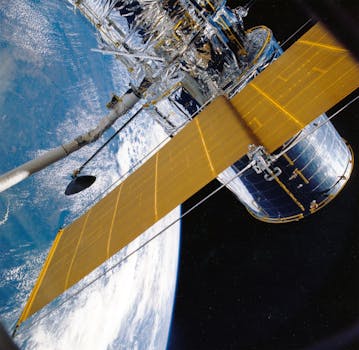
Focus Keyword: Satellite Telecommunications
Satellite Telecommunications have come a long way since the launch of the first commercial satellite, Intelsat 1, in 1965. Over the years, significant advances have been made in space technology, enabling faster, more reliable, and more efficient communication beyond Earth. In this article, we will explore the recent advances that are shaping satellite telecommunications and their impact on the industry.
Introduction to Satellite Telecommunications
Satellite telecommunications involve the use of artificial satellites in orbit around the Earth to transmit and receive signals. These signals can be used for a variety of purposes, including television broadcasting, telephone communications, and internet connectivity. Satellite telecommunications have several advantages over traditional fiber-optic and wireless communication systems, including global coverage, high bandwidth, and resistance to natural disasters.
Recent Advances in Satellite Telecommunications
Recent advances in satellite telecommunications have been driven by improvements in space technology, including the development of more powerful and efficient rockets, advanced materials, and sophisticated electronics. Some of the key advances include the use of high-throughput satellites (HTS), which offer faster data speeds and greater bandwidth; the development of satellite constellations, which provide global coverage and improved connectivity; and the use of advanced propulsion systems, which enable satellites to stay in orbit longer and maneuver more efficiently.
Another significant advance in satellite telecommunications is the use of quantum technology. Quantum satellites use quantum entanglement to create secure communication channels, which are virtually un-hackable. This technology has the potential to revolutionize the way we communicate sensitive information, including financial transactions and military communications.
Impact of Recent Advances on the Industry
The recent advances in satellite telecommunications are having a significant impact on the industry. One of the most significant effects is the increase in global connectivity. With the launch of satellite constellations, such as OneWeb and Starlink, people in remote and underserved areas are now able to access the internet and other communication services. This is having a major impact on education, healthcare, and economic development in these areas.
Another significant impact of recent advances in satellite telecommunications is the growth of the Internet of Things (IoT). With the ability to connect devices and sensors via satellite, the IoT is expanding rapidly, enabling new applications such as smart cities, precision agriculture, and industrial automation.
Conclusion
In conclusion, recent advances in satellite telecommunications are shaping the future of communication beyond Earth. With the use of high-throughput satellites, satellite constellations, advanced propulsion systems, and quantum technology, the industry is experiencing rapid growth and innovation. As satellite telecommunications continue to evolve, we can expect to see even more exciting developments in the years to come.





